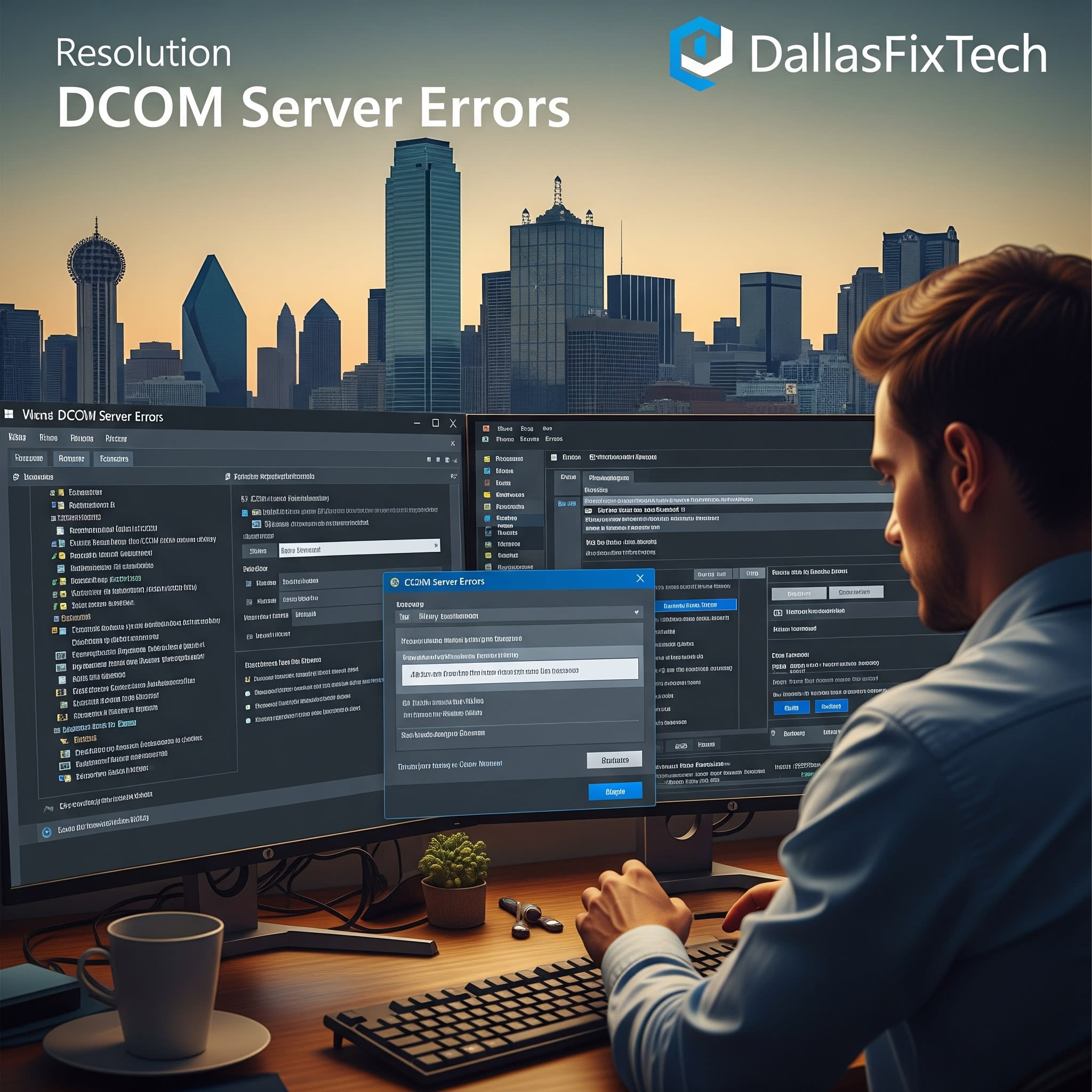
How to Resolve DCOM Server Errors Without Breaking Windows: DallasFixTech’s Safe Method
If you're a Windows user, you might have encountered a barrage of **DCOM (Distributed Component Object Model) errors** flooding your Event Viewer logs. These errors, often related to permissions or service communication, can manifest as slow boot times, application crashes, system instability, and general performance degradation. While many online guides suggest quick fixes, careless registry edits or permission resets can easily break critical Windows components, leading to a much worse problem. At **DallasFixTech** in Dallas, TX, we specialize in securely and permanently resolving DCOM errors using **safe registry edits, precise permission resets, and Component Services tweaks**, all while preserving essential system functionality.
What are DCOM Errors and Why Do They Occur?
DCOM is a Microsoft technology that allows software components to communicate with each other across a network. When a DCOM error occurs, it typically means a program or service is trying to access another component but lacks the necessary permissions, or the component itself is corrupted or unavailable. Common reasons include:
- Incorrect Permissions: The most frequent cause. A system service or application lacks the necessary launch or activation permissions for a DCOM component.
- Corrupted Registry Entries: Damage to the Windows Registry related to DCOM applications.
- Missing or Damaged Components: Essential DCOM components or their dependencies are not present or are corrupted.
- Software Uninstalls: Improper uninstallation of programs can leave behind broken DCOM entries.
- Windows Updates: Less commonly, an update can sometimes alter permissions or component registrations.
DallasFixTech’s Comprehensive Approach to Resolving DCOM Errors
We use a systematic and cautious approach to ensure a lasting and safe fix:
- Root Cause Analysis & Event Log Deep Dive: Our first step is to thoroughly analyze your Windows Event Viewer (specifically System and Application logs) to identify the exact DCOM Event IDs and their associated applications or CLSID/APPID codes. This helps us pinpoint the specific service or permission fault.
- Controlled Registry Fixes (with Backups): We perform precise modifications to only the necessary registry keys related to the identified DCOM errors. Crucially, we always create comprehensive registry backups before making any changes, ensuring a rollback option if needed.
- Permission Resets via Component Services: We access the Component Services utility (dcomcnfg) to meticulously review and reset specific launch and activation permissions for the problematic DCOM applications, ensuring essential services have the correct access rights.
- Dependency Verification: Ensuring that all services and applications relying on DCOM are properly registered and have their dependencies met.
- System File Integrity Checks: Running tools like System File Checker (SFC) and Deployment Image Servicing and Management (DISM) to repair any corrupted system files that might be contributing to DCOM issues.
- Enterprise Hardening (for Businesses): For complex or persistent DCOM errors in business environments, we can implement tailored solutions that align with enterprise best practices for component services and security.
- Post-Fix Validation: After applying fixes, we monitor system stability and re-check Event Viewer logs to confirm that DCOM errors have been permanently resolved.
Don’t Let DCOM Errors Slow You Down – Schedule a Professional Fix!
Stop letting cryptic DCOM errors impact your PC's performance and stability. **DallasFixTech** offers expert, secure fixes that protect essential system functionality in Dallas, TX. **Schedule a service** today and regain complete system stability and responsiveness.